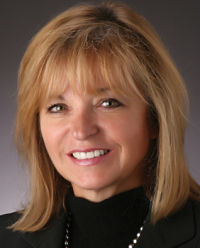 Companies' efforts to improve their working capital seemto be lagging.
Companies' efforts to improve their working capital seemto be lagging.
NACHA's recent decision to provide same-day settlement of ACHtransactions should be a plus going forward for working capital atcompanies that use ACH to make payments or that receive a lot ofconsumer payments via ACH. However, a couple of recent surveyssuggest that over the past year companies made little headway infreeing up more of their cash through receivables, payables, orinventory.
|Consulting company REL's annual benchmarking of working capital at 1,000 largecorporations showed there was no change last year in the averageorganization's cash conversion cycle, a measure of the time ittakes a company to recoup the money it spends producing goods bycollecting from its customers.
|REL argues that low interest rates have encouraged companies torely on borrowing instead of doing the work to free up cashinternally.
|“With the low interest rates and the fact that debt is cheap,there is less willingness to go after working capital improvementsbecause that is not always straightforward,” said Craig Bailey, aproject manager at REL. “That requires process changes, lookingdeep within organizations to understand where the opportunitiesare.”
|Making changes in inventories could require altering the way thecompany does business, he said, while trying to squeeze more cashfrom receivables and payables involves conversations with buyersand suppliers “that people don't always want to have.”
|“What we're seeing is less willingness to go after that becausereally money is available through borrowing,” Bailey said.
|REL's analysis of the financial filings of the 1,000 largestnonfinancial corporates in the U.S. shows an average increase indebt of 62% since 2007. Meanwhile, the cash conversion cycle wasunchanged in 2014 at 33 days; it has improved only one day since2007, when it stood at 34 days.
| Inventories were basically flat in2014, showing 0.1 day of improvement, Bailey said, while payablesperformance deteriorated by 0.4 days. The benchmarking showed oneday's improvement in receivables, but he called that “misleading”because it was driven by the oil and gas industry and reflected themovement in crude oil prices late last year. “When we strip out oiland gas, the improvement effectively disappears,” said Bailey,pictured at left.
Inventories were basically flat in2014, showing 0.1 day of improvement, Bailey said, while payablesperformance deteriorated by 0.4 days. The benchmarking showed oneday's improvement in receivables, but he called that “misleading”because it was driven by the oil and gas industry and reflected themovement in crude oil prices late last year. “When we strip out oiland gas, the improvement effectively disappears,” said Bailey,pictured at left.
Companies have to be concerned not only with making improvementsin their working capital measures, but with maintaining theimprovements they've already made, he said.
|“A lot of companies struggle with sustainability,” he said, andnoted that while companies may reduce the payment terms they offerto customers and push out the payment terms for their suppliers,“the door is always open for pushback and negotiation.
|“We often see that if people do accept a change in terms,they'll accept it for a couple of years and then they'll come backand try to renegotiate,” Bailey said. Because inventories arecontrolled internally, improvements in that area are moresustainable, he added.
|Bailey predicted that companies will rethink their reliance ondebt as rates start to rise. “It's normally when interest rates arehigher that companies will look at their own working capital to seehow they can reach that cash that is locked up,” he said.
|Collections Side of theEquation
A separate survey, conducted by technology provider SunGard, asked400 executives about their companies' credit and collectionspolicies. It found that just 14% of the executives think their dayssales outstanding (DSO) performance is above average for theirindustry, while 30% judge their company to be average in DSO and21% think it's below average. (Thirty-five percent said theyweren't sure how their DSO performance compared.) C.J.Wimley, chief operating officer of SunGard's AvantGard Receivablesbusiness, noted that 19% of the survey respondents said they hadseen an increase in their DSO measure in the latest year, up fromthe 15% that cited an increase in DSOs in last year's survey.Wimley linked that change to customers' requests for longer paymentterms.
“Over the last six or seven years, especially after thefinancial crisis, I think you're seeing a more concerted effortfrom large customers to ask for extended terms,” he said. “If thoseterms are granted, they are going to impact DSOs.”
|The biggest problem that respondents saw, cited by 24% of thesurvey's respondents, was that as revenues have grown, the work ofcollections has increased but companies haven't boosted the numberof workers involved in collections.
|Given those constraints, Wimley said, the use of technology and centralization may help companies improvetheir DSOs. While companies initially saw the move to shiftaccounts receivable work into shared service centers as acost-cutting measure, “now they realize they can gainefficiencies,” he said.
|Wimley cited predictive analytics as another way to improve collections andDSOs. “Risk analytics, doing the statistical analysis of theseportfolios and driving the collection activity to the highest riskin the portfolio, is really what can be the most effective bestpractice for organizations, and that's going to have the largestimpact on increasing that cash flow,” he said.
|Same-day ACH
One bright spot for companies' working capital management effortscould be the recently announced move to same-day ACHsettlement.
Most ACH payments now settle next day. But in May, NACHA votedto provide same-day settlement starting in September 2016. Same-daysettlement will coexist with regular settlement. It will not beavailable for international transactions or transactions whosevalue exceeds $25,000.
|Cindy Murray, head of global treasury product platforms anddigital channels at Bank of America Merrill Lynch, said same-daysettlement could improve working capital for companies that use ACHto pay their vendors or other parties because the companies wouldget to hold onto their cash longer.
| “You can gaina day in certain types of payments,” said Murray, pictured atright. “Things like emergency payroll and vendor payments certainlyfall into the category.”
“You can gaina day in certain types of payments,” said Murray, pictured atright. “Things like emergency payroll and vendor payments certainlyfall into the category.”
The companies that benefit most, though, are likely to be thosethat have a lot of consumers paying them via ACH, Murray said.
|“The premise is that the cash conversion cycle will be faster,”she said. “If you're receiving more ACH payments on a same-daybasis, it should improve your working capital position and reduceshort-term financing.”
|Companies with a significant volume of consumer payments, suchas utilities and insurers, “generally have payment gateways,”Murray said. “They could create files and send those files on asame-day basis, and apply that cash as well as update their billingsystems.” The move to same-day settlement and the faster updatingof billing systems will also help companies improve customerservice, she said.
|But it's not clear how many payments will qualify for same-daysettlement given the $25,000 limit, Murray said.
|For example, retailers' receipts from customers' debit andcredit card purchases are typically rolled up into a singletransaction that likely would exceed that limit, she said. “So youare not going to be able to use a one-size-fits-all approach—theimpact of same-day ACH will vary by industry. Clients are lookingat the impact on working capital and their ability to forecastpayments that come in late in the day, as enabled by same-dayACH.”
|Murray said she's hearing from treasurers that they would prefera higher cap on same-day ACH settlement so they could replace morewire transfers, which cost more, with less-expensive ACHpayments.
|REL's Bailey said accelerating the transfer of funds shouldbolster working capital. “Certainly cutting out any days of delayswill help companies to receive their cash quicker, and that will bereflected in their working capital,” he said.
|Complete your profile to continue reading and get FREE access to Treasury & Risk, part of your ALM digital membership.
Your access to unlimited Treasury & Risk content isn’t changing.
Once you are an ALM digital member, you’ll receive:
- Critical Treasury & Risk information including in-depth analysis of treasury and finance best practices, case studies with corporate innovators, informative newsletters, educational webcasts and videos, and resources from industry leaders.
- Exclusive discounts on ALM and Treasury & Risk events.
- Access to other award-winning ALM websites including PropertyCasualty360.com and Law.com.
*May exclude premium content
Already have an account? Sign In
© 2024 ALM Global, LLC, All Rights Reserved. Request academic re-use from www.copyright.com. All other uses, submit a request to [email protected]. For more information visit Asset & Logo Licensing.







